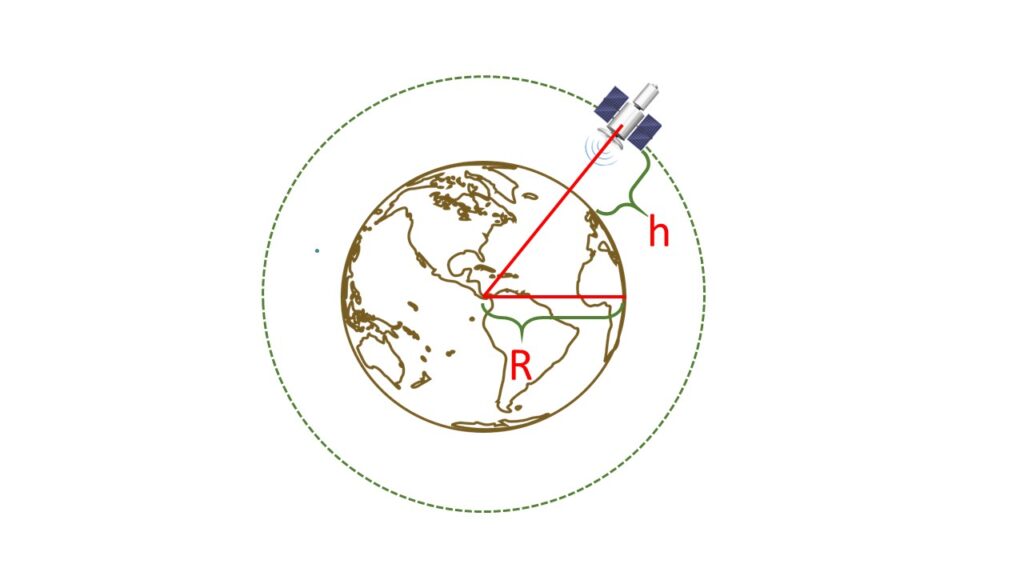Height of an artificial satellite:
Let us consider an artificial satellite revolves around the earth with a velocity \( v \), at a height \( h \) from the surface of the earth. Mass of the earth is \( M \) and radius is \( R \)

Here, the gravitational force of attraction is equal to centrifugal force on the satellite.
\( \frac{GMm}{{(R+h)}^2}=\frac{mv^2}{(R+h)} \\or,\ v=\sqrt{\frac{GM}{R+h}} \)where \( G \) is the gravitational constant.
Now the time period of the satellite is,
\( T=\frac{2\pi(R+h)}{v} \\=\frac{2\pi(R+h)}{\sqrt{\frac{GM}{R+h}}} \\=2\pi(R+h)\sqrt{\frac{R+h}{GM}} \)We know that the acceleration due to gravity \( g=\frac{GM}{R^2} \),
\( T=2\pi(R+h)\frac{\sqrt{R+h}}{gR^2} \)or, \( \displaystyle{T=2\pi\frac{(R+h)}{R}\sqrt{\frac{R+h}{g}}} \)
or, \( \displaystyle{\frac{T}{2\pi}=\sqrt{\frac{{(R+h)}^3}{gR^2}}} \)
or, \( \displaystyle{ \frac{T^2}{4{\pi}^2}= \frac{{(R+h)}^3}{gR^2}} \)
or, \(\displaystyle{ R+h={\left[\frac{gR^2{T}^2}{4{\pi}^2}\right]}^{\frac{1}{3}} }\)
or, \( \displaystyle{ h= {\left[\frac{gR^2{T}^2}{4{\pi}^2}\right]}^{\frac{1}{3}} -R } \)
